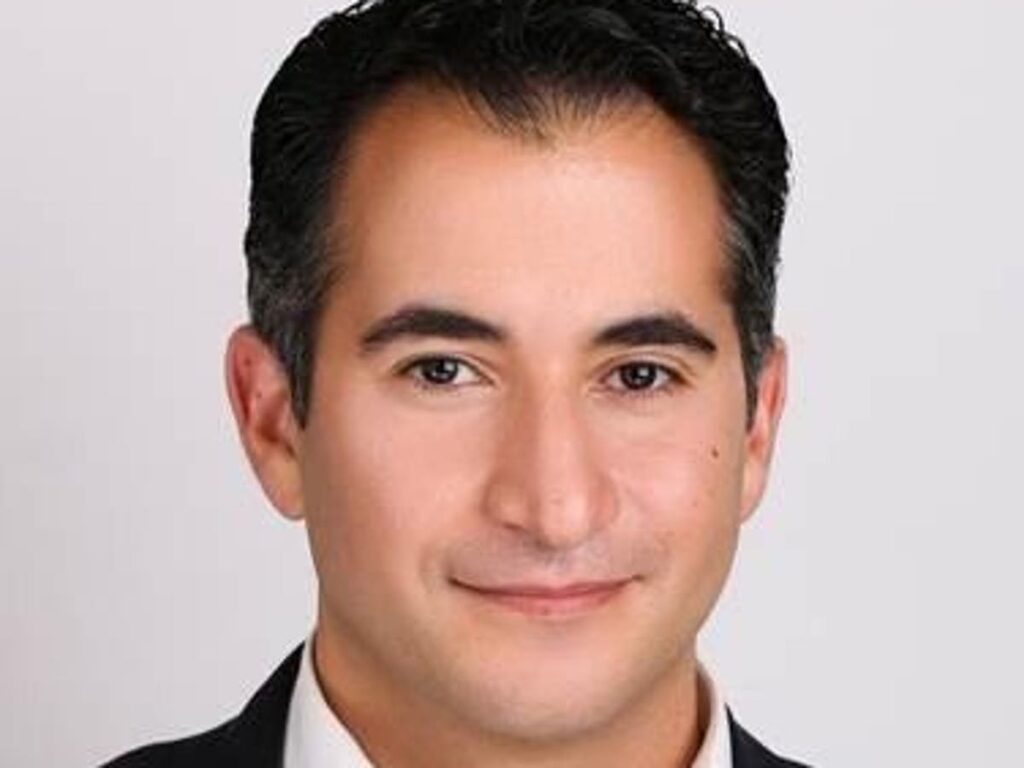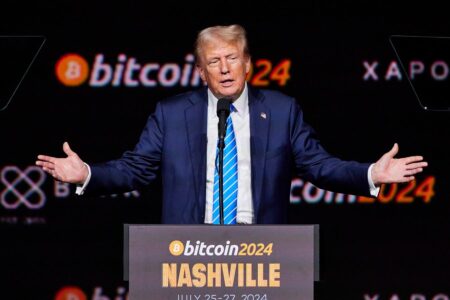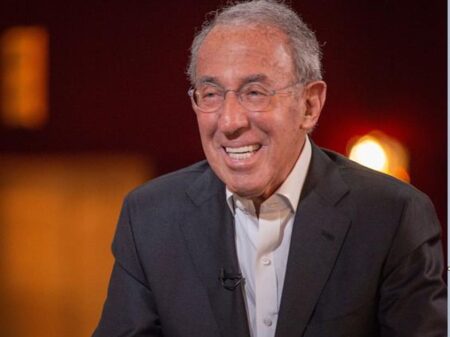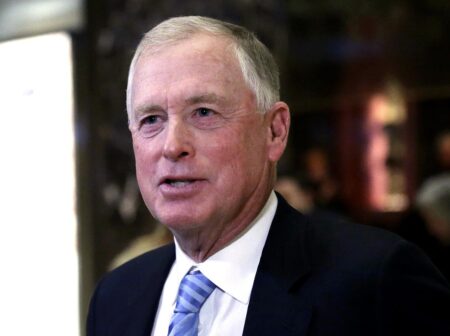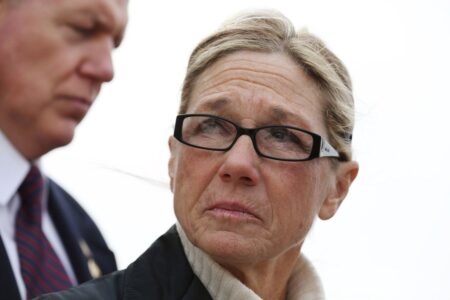Joshua Vlasto, partner at the strategic communications firm Bamberger & Vlasto, has a long history of working in the public affairs and investor relations sector for various firms focused on the philanthropic and financial services industries.
Within the crypto world, he is best known as the spokesperson and public face of Fairshake, a super PAC backed by crypto firms and investors such as Coinbase and Andreessen Horowitz that spent more than $130 million on the recent election. Fairshake notched more than 48 wins this election cycle, with some of the most prominent being the defeat of Senate Banking Committee Chairman Sherrod Brown (D-OH) and crypto skeptic representatives Katie Porter (D-CA) and Jamaal Bowman (D-NY). However, Fairshake took a bipartisan approach to its spending, as it also spent money on several critical down-ballot Republican races.
In this conversation, we discuss Fairshake’s origin story and strategy, lessons learned from this election cycle, and how he is gearing up for the 2026 midterms in two years.
Forbes: Crypto’s public perception was badly tarnished after the collapse of FTX. How did you use this experience to calibrate Fairshake’s strategy?
Joshua Vlasto: Fairshake came into being in the middle of 2023, and we’ve always seen it as a response to FTX, not as an outgrowth. We’ve had a very focused, professionalized team and strategy that was clear and tailored and targeted Congress bipartisanly across both chambers. The previous industry strategy led by FTX and SBF was all over the place.
Forbes: How much money did you raise for the PAC?
Vlasto: $171 million.
Forbes: What was your fundraising goal?
Vlasto: Ultimately, it’s up to the donors to decide how much they will donate. But the goal was to have an impact and show the industry and all of our stakeholders that this was an industry that was really focused on changing the conversation in Washington and showing members of Congress that this is an industry that should be worked with, taken seriously and professionalized. One way to do that, and there were a number of different initiatives that were going on in parallel, was to show that we had a political operation that could have a direct and immediate impact on races all across the country.
Forbes: Was there unanimity in goals among your donors or were there important differences you had to address?
Vlasto: If you look back at my public statements, we were very clear that the strategy had alignment from both our supporters as well as the people who were running the PAC on a day-to-day basis. It was a bipartisan approach to both houses of Congress, incumbents and challengers, and primaries in general. One of the things that took our sort of observers by surprise was frankly how clear we were about what we were looking to achieve. So when you say, was there any nuance in the strategy that everybody was aligned behind? I think you just have to look at what we said and then what we did and see that it was exactly the same thing.
Forbes: You did not spend any money on the presidential election?
Vlasto: Correct.
Forbes: Given Trump’s major overtures towards the industry and the fact that at least before the election, it seemed like it could come down to a few thousand votes in a couple of different states, what was the reason that you decided to focus on down-ballot races?
Vlasto: You should look at a couple of things. One, that was a decision that was made and communicated before Vice President Harris became the Democratic nominee. And even before some of the current President-elect’s overtures and discussions with the industry. Additionally, the goal of Fairshake and the affiliated PACs was to support members of Congress who would work together to get something done and pass responsible regulations. And that emanates from Congress. Building that bipartisan coalition, which we saw happen in practice during the current Congress, and now we see come together with the new Congress, is that legislation emanates from Congress. So the focus on Congress makes sense regardless of who the president was going to be.
Forbes: There were still about four months left in the campaign after Trump made his big shift. Was there ever any thought of changing at that point?
Vlasto: Not that I’m necessarily aware of. In the end, we had a clear strategy, and our decision was to stick to it and recognize that our supporters on both sides of the aisle donors would make their own decisions. Ultimately, some of them supported the President and, I should say, some of them made various other decisions. But ultimately, our strategy was to stick to our strategy.
Forbes: Was there any concern that if you did get involved in the presidential election, it would hurt the ability to be seen as bipartisan?
Vlasto: No. And I think also I would amend bipartisan by saying almost nonpartisan. We evaluate candidates and races to support based on one rubric, which is whether someone is going to be a supporter of the industry, believes in the industry and will work with the other members of Congress and the industry to help pass a responsible regulatory structure and support innovation and create jobs. That was the rubric all the way through. It could have been a Democratic candidate, it could have been a Republican. Even if you drill down a bit deeper at how we engaged in some of the primaries, there were plenty of Democratic primaries where we supported a crypto supporter against a crypto opponent. Here I am talking about California Representative Katie Porter and New York Congressman Jamaal Bowman, and the entire Elizabeth Warren crowd where these were people who were playing politics and standing in the way of making progress. We said that if you stand in the way, we will oppose you.
On the Warren side of things, there were five races where we engaged either in the primary or the general election. I think all of them lost. If you look at Katie Porter, she talked about the crypto industry opposing her candidacy, and she lost. Jamal Bowman did the same thing, and he lost, and there were a couple of congressional races in Arizona where it was the same thing. In the end, there was a real clear message from the voters that this is an industry that they support, that they want to be part of the modern financial services ecosystem, and that the sort of backbreaking isolation politics that Elizabeth Warren and her followers were playing was not a tenable position.
Forbes: What was your primary message in these campaigns?
Vlasto: Crypto and blockchain, and long-term building of a sustainable coalition supporting innovation, American jobs and responsible regulation.
Forbes: PACs (political action committees) are also known for negative messaging against candidates. Is that something that you engaged in?
Vlasto: Our strategy was to impact races important to our stakeholders. So we did research, content testing and ad testing to discern the most impactful way to support the candidates that we were supporting and help them win. If you look in Arizona or Ohio, for instance, the messaging was what will resonate and impact the race as much as possible.
Forbes: So your messaging did not necessarily focus on crypto, but on particular themes that would have the biggest impact?
Vlasto: There was some spending related to crypto against Katie Porter in the Ohio senate race against incumbent Sherrod Brown. But the majority was focused on other messaging. In the end, the mission of PAC is to support candidates, and the best way to support candidates is to build support for them in their constituencies. Most of our efforts were positive and supportive of the candidates that we felt would be most aligned with our mission. However, in the cases of Porter, Bowman, Bush and a couple of others, some ads were attacking the opponent.
Forbes: What were some of your key lessons learned through this process?
Vlasto: I think it is having a strategy and sticking to it, which to me, is a very key piece. We’re lucky that the industry was so supportive in terms of showing the world that we were very well-resourced and had the ability to do what we said we were going to do, and then we were able to execute it. That’s the key. Now going into the next Congress, one of the things I’d point to is a real validation of what we see as our success and delivering in terms of our strategy, is we announced the two commitments from Andreessen and Coinbase before the election. (Editor’s note: Ripple just announced another $25 million as well.) Both key stakeholders and industry leaders reaffirmed their support and belief in our strategy and our ability to execute without knowing the outcome.
Forbes: I know you’ve heard criticism about the crypto industry being disproportionately large in spending this cycle. How do you respond to that?
Vlasto: It was a concerted decision by the industry to have an impact, and that’s what we did. We were transparent in our fundraising and open about it. There are plenty of other industries over the last cycles that have spent similar metrics of sums. Maybe we’re the largest at this point. We may not be the largest next cycle, but we were effective. I think people can say what they want, but I’d refer back to what I said before, which is we did what we said we were going to do, and the industry supported it.
Forbes: I think an argument can be made that this election cycle was particularly relevant for the crypto community, given everything happening with Gary Gensler and the desire to defeat Senate Banking Committee Chairman Sherrod Brown.
Vlasto: That’s right. I think part of what our sort of nonpartisan, bipartisan strategy exposed was that the position of the far left and some ideologues in the Biden administration, as I said, was not tenable. You can’t have an industry that is growing, generating wealth, breaking down financial barriers for underserved communities and saying no, absolutely not. What you saw in terms of the momentum during the course of 2024 was a real recognition on both sides of the aisle that these are people we can work with.
Forbes: What does the electoral map look like for the next Congress? Who might be your big targets?
Vlasto: The map is just coming together now. We have deep support from the industry, and we’ll look at the map and look at the Congress as things evolve going forward. But I imagine we will continue to stay focused on both sides of Congress, House and Senate, and continue our rubric of supporting crypto supporters and opposing crypto opponents.Forbes: Thank you.
Read the full article here







